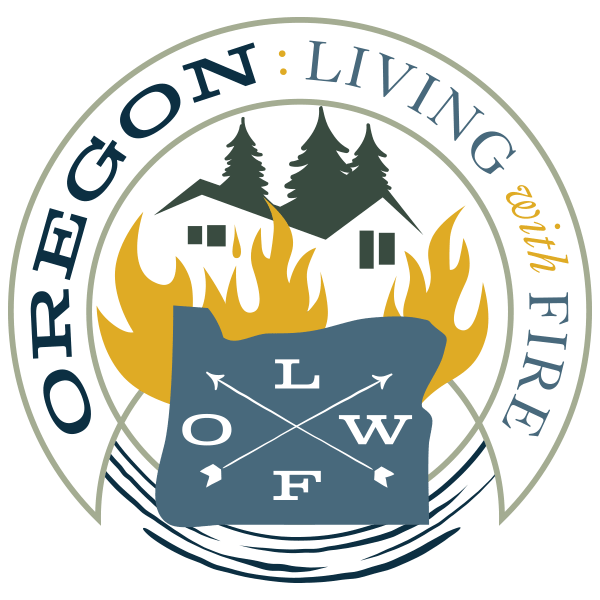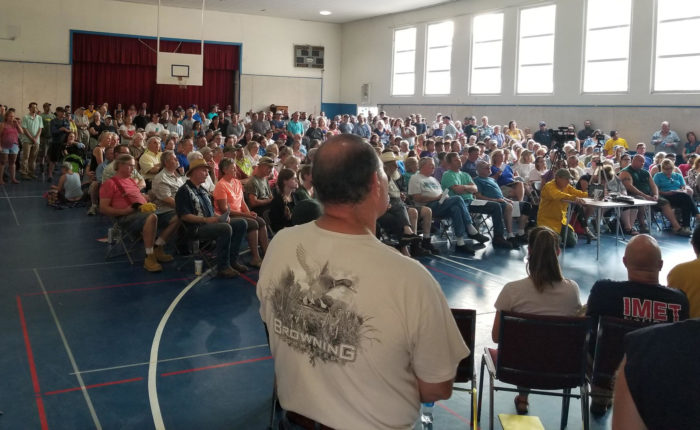This blog was originally posted on the Fire Adapted Communities Learning Network Blog
The Panic Myth, Part I – What Does the Research Say?
by Sarah McCaffrey
As I’ve been watching the fires in Australia over the past several months I’ve been impressed with their public messaging. There are many aspects that I like about the messages but one that I wanted to highlight is the way they are upfront about conditions and potential options. They are willing to tell people ahead of time that roads might be closed and they need to leave immediately or even that it might be too late to leave. There is no assumption that people will panic if they are given information but rather it is expected that good information will help people make the best choices for their situation.
“The fire is spreading quickly. If you are in Tallong, Werai, Exeter, Manchester Square, Avoca, Fitzroy Falls, Barrengary or surrounding areas it is too late to leave. Seek shelter as fire approaches.” ~Evacuation alert from the New South Wales Twitter Feed [1]
So I wanted to discuss the myth of panic as it is not unusual for me to read comments from emergency responders in the US who are hesitating to send out an early warning out of concern that people will panic. However, research clearly demonstrates that actual panic (irrational, nonadaptive, or antisocial behavior) in response to a natural hazard, including wildfire, is extremely rare. Evidence shows that although there may be heightened anxiety, fear, and more rapid action (all rational responses to impending danger), individuals tend to respond to an imminent threat by first engaging in gathering more information to determine the best course of action and then proceeding to act in a manner congruent to their situation. [2] When people recount their experiences and say “I panicked” it may be less about describing irrational behavior than acknowledging a moment when there was a shift to more focused and rapid thought processes.
Although the belief seems to be that people will madly run over everyone else to escape, the evidence is that when faced with an imminent threat many individuals engage in helping behavior (informing neighbors, helping others evacuate). [3] These helping behaviors are the inverse of panic (e.g., prosocial rather than antisocial behavior). I suspect that many of you have seen examples of this helping behavior in the course of your work.
Given the lack of support for the panic myth, it is interesting to ask why it persists. There are a number of possible reasons:
- The media may focus on panic because of its inherent drama. It is more dramatic (and, I admit, much shorter) to state “People were fleeing down the road!” than to explain “Homeowners immediately got in their car and drove out of the neighborhood, paying attention to the best route to avoid the fire.”
- The notion of panic may be a matter of perspective. Research has shown that behaviors seen as panic by outside observers, in reality, are a rational response from the threatened individual’s perspective. [4]
- Panic can be an easy way to explain poor outcomes. As an example, driving toward flames to rescue someone is labeled as panic if there is loss of life but deemed heroic if a life is saved.
- The panic narrative may reinforce existing wildfire governance structures. Some scholars have suggested the panic myth persists as emergency response organizations have the incentive to focus on it as it reinforces their central role in the command and control structure.[5]
The issue with any of these reasons is that they create inaccurate expectations about public behavior that can, in and of themselves, contribute to poorer outcomes. Hesitating to provide warnings out of concern about causing ‘panic’ can mean that individuals are not provided with timely information that could help them make the safest decision for their situation. So it is noteworthy and commendable that the Australians do not appear to have fallen prey to the panic myth in their messaging: I encourage everyone who reads this to follow their lead.
The Panic Myth, Part II – What Can Practitioners Do?
by Annie Schmidt
So what can practitioners do to follow Australia’s lead? How can we frame our evacuation and crisis messaging so it is useful and used? As a Public Information Officer for a combination Fire Department, I often find myself crafting or sharing messages for the public (and occasionally wishing I had said something differently or more effectively). Crisis communication research provides some insight: [6]
- Be present in your community in advance of the fire. Individuals seeking information during a wildfire are likely to turn to familiar sources of information—sources that they used and trusted before the fire. If you or your organization is likely to distribute information about evacuations during an emergency, utilize your communication channels before the fire. At Chelan County Fire District 3 in Leavenworth, we rely heavily on our Facebook Page to distribute information, but we are also aware that not all of our residents use Facebook! We also communicate ahead of the fire through our local radio stations and print media.
- Be prepared. Plan ahead for evacuation messaging by creating pre-scripted messages in advance. This should include different messages for different scenarios (voluntary evacuation, mandatory evacuation, hazardous materials shelter-in-place, etc.). This can reduce the amount of time it takes you to issue a warning if it is needed. Pre-scripted messages are particularly important if you need to have messages approved by multiple agencies/decision-makers or you need to communicate with members of your community in a language other than English. Finding a qualified translator at 3 AM can be next to impossible, so prepare in advance!
- Be clear and direct. As we saw in the example from Australia, the messaging was clear and straightforward about both the hazard and what action they wanted the public to take. Use clear words and phrases with specific instructions. All messaging is a balancing act. Messages need to be direct and provide as specific information as possible while simultaneously not being overwhelming. Research on warnings [7] has shown that a good warning message:
- Tells people what to do
- Tells people when to do it
- Tells people who the message applies to (who needs to stay and who needs to go, for example)
- Tells people the consequences and how their actions will help avoid them.
- Be local. Address the local context and use local relationships to put the word out. People pay attention to whether the local context is being taken into account. Making sure your local landmarks are correct not only helps make instructions clear, but it also reinforces your credibility. Several years ago, I was working as a Public Information Officer on a large wildfire where a member of the Incident Management Team (in a public meeting, no less), misidentified the location of the community he was speaking to on a map. I heard a member of the audience whisper (loudly) to a friend: “If he doesn’t know where we are, how does he know where the fire is?!”
- Be timely. People are actively looking for information; they are in an uncertain situation and they are trying to find clarity. Help them get good information as quickly as possible. It is better to provide some information quickly then perfect information with a delay. There will always be some information that is missing. It is OK to be upfront about what you don’t know— just tell people what you are doing to remedy that.
- Be realistic. Don’t expect that everyone will follow your instructions exactly! Some people will seek confirmation from other sources while others may check to make sure neighbors have transportation. These are all reasonable actions. Even if you are doing everything right (timely, clear messaging distributed through multiple effective channels), some people will still delay action. Your goal is to provide the best information possible to help people make the best decisions for their situation.
- Be interactive to the degree possible. Fires create a lot of uncertainty, which most of us hate. As a result, people actively look for information to reduce that uncertainty. The higher the uncertainty, the more important interactive options are as a means to help reduce specific concerns. Interactive engagement enables people to ask questions, clarify concerns, and understand the reasons behind the decision-making. When you think about it, these are the same principles that underpin many of our strategies to engage with residents before a fire.
- Be willing. This may seem like an odd thing to include in this list! Yet, in my experience, this is critical. Be willing to explain things after the emergency, particularly if a wildfire or other hazard threatens a community but doesn’t ever arrive. Be willing to explain fire management actions and the strategies being used to respond to the emergency. I have seen information officers omit information they have deemed too “advanced” for a community only to miss significant opportunities for public dialogue and engagement. While this particular tip may be more relevant to things that occur after the initial warning or communication has been issued, I have included it here because I feel like it is an area where many of us (myself included!) can improve.
This resource, by Dr. Dennis Mileti, provides an excellent summary of the science surrounding public alert messages and best practices for everything from message content to delivery. [8]
For those practitioners who communicate with the public about fire, but not necessarily about evacuation, it is a good reminder to be considerate about the language we use. Consider the following words: incendiary, devastating, catastrophic, exploded, torched, megafire. It is hard to think about the benefits of a wildfire or the need to live with wildfire when those words, and others like them, are used. There is inherent drama in fire, so there is little need to add dramatic language.
Sarah’s point about how perspectives might vary and contribute to the panic myth is worth serious consideration. It is important for practitioners to evaluate our own perceptions of panic: If someone is actively seeking information or thrown into rapid response, do we see that as panic or perceive that behavior as inherently negative? What are the consequences if we do? I know I have heard practitioners comment about the public reaction to small fires or prescribed fire smoke as panic—and in doing so, dismiss the concerns as unwarranted or irrational. Active information seeking and rapid decision making is not panic and is not inherently a bad thing. Rather, active information seeking is an opportunity, first and foremost, for us to engage with our communities.
References:
[1] https://twitter.com/NSWRFS
[2] Read the research here: Tierney, K. (2003) ‘DISASTER BELIEFS AND INSTITUTIONAL INTERESTS: RECYCLING DISASTER MYTHS IN THE AFTERMATH OF 9-11’, Research in Social Problems and Public Policy. DOI: 10.1016/S0196-1152(03)11004-6.
[3] Tierney, 2003.
[4] Read the research here: Fahy, R. F., Proulx, G., and Aiman, L. (2012) ‘Panic or not in fire: Clarifying the misconception’, in Fire and Materials. DOI: 10.1002/fam.1083.
[5] Tierney, 2003.
[6] Read the research here: https://www.nrs.fs.fed.us/pubs/jrnl/2013/nrs_2013_steelman_001.pdf, https://www.govtech.com/em/emergency-blogs/managing-crisis/five-tips-to-improve-your-public-warnings.html
[7] Read the research here: https://swfound.org/media/82620/public%20response%20to%20disaster%20warnings%20-%20dennis%20s.%20mileti.pdf
[8] You can also see a terrific FEMA PrepTalk with Dr. Mileti here: https://www.youtube.com/watch?v=HBcyQmWMOx0

